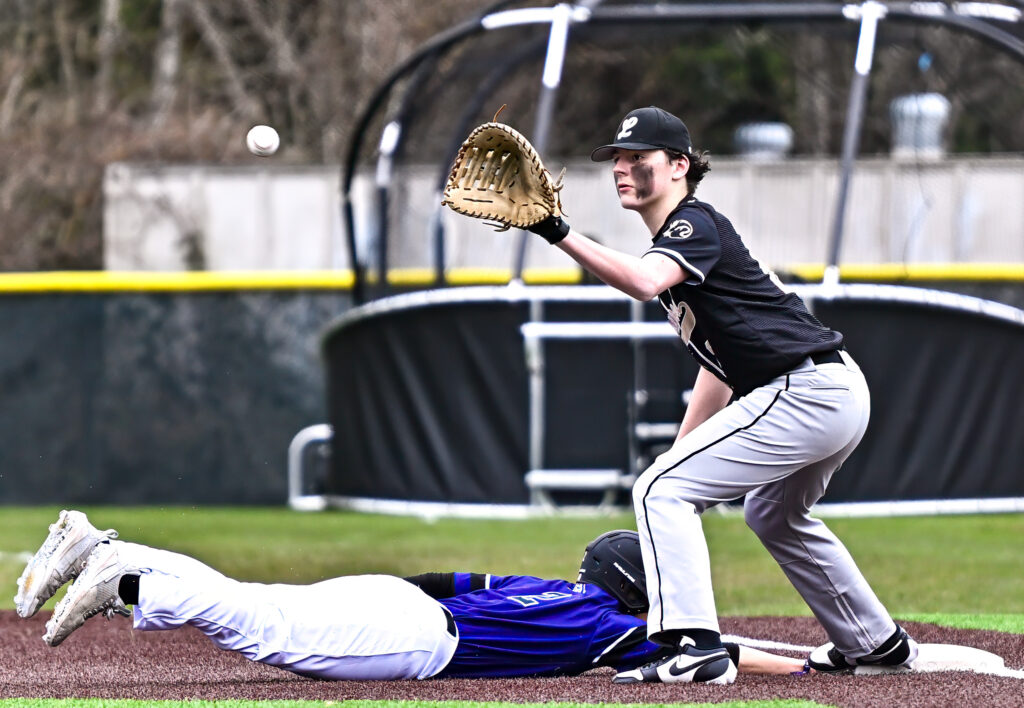NIL
Nebraska’s in-state recruiting is a sign of the future.
Matt Rhule arrived with much pomp and ceremony as the chosen one to drag Nebraska out of the endless spiral of losing seasons. He placed an enormous emphasis on in-state players on scholarship or the walk-on program. The world of college football has been turned on its head with NIL and roster limits to the […]
Matt Rhule arrived with much pomp and ceremony as the chosen one to drag Nebraska out of the endless spiral of losing seasons. He placed an enormous emphasis on in-state players on scholarship or the walk-on program.
The world of college football has been turned on its head with NIL and roster limits to the point where Rhule had to pivot. To see this playing out in real time, one only has to look at the top-ranked in-state players in the 2026 class and where they are heading.
Lone Ranger
Linebacker Jase Reynolds (6-3/206lbs) out of Elkhorn North in Omaha is a 3-star recruit ranked 10th in Nebraska’s 2026 class, according to 247. He is currently the only in-state recruit committed to the Huskers, and only a handful of crystal balls are floating around for in-state recruits, but nothing concrete.
Advertisement
Reynolds is a rangy athlete with great instincts, blowing up plays, but he is raw and will need considerable bulking up to play as an inside linebacker.
To 105 or not to 105?
The ever-changing debate on roster sizes has not yielded any real answers, and Nebraska’s lack of real portal subtractions bears that out. The trimmer roster sizes will undoubtedly hurt the in-state prospects’ chances of being offered.
It was almost a given that the top 10 players in the state could rely on a Nebraska offer—that is no longer the case. The fact that some in-state prospects have publicly said that the coaching staff is not in contact is a sign of the future.
Advertisement
Nebraska will continue cherry-picking players it feels can make a realistic difference on the team and ‘culture players’ who may not threaten the two deep but are key to maintaining standards.
The state produces capable, tight-end body types, and these sorts of players will always be in demand.
Isaac Jensen (6-6/205lbs) is the next in the conveyor belt of tight ends, and this trend will continue as long as football needs beefy blockers.
Football has changed so rapidly that it may very well shift again, but for right now, in-state prospects can’t guarantee a Nebraska offer.
GBR
More from cornnation.com:
NIL
Nick Saban downplays need for college sports commission, urges unified NIL rules
During an appearance on the SEC Network’s “Paul Finebaum Show” yesterday, former college football coach Nick Saban said that he “doesn’t believe there needs to be a commission to resolve the issues of college athletics,” which President Donald Trump reportedly “wants him to co-chair,” according to John Leuzzi of USA TODAY. Saban noted, “I don’t […]
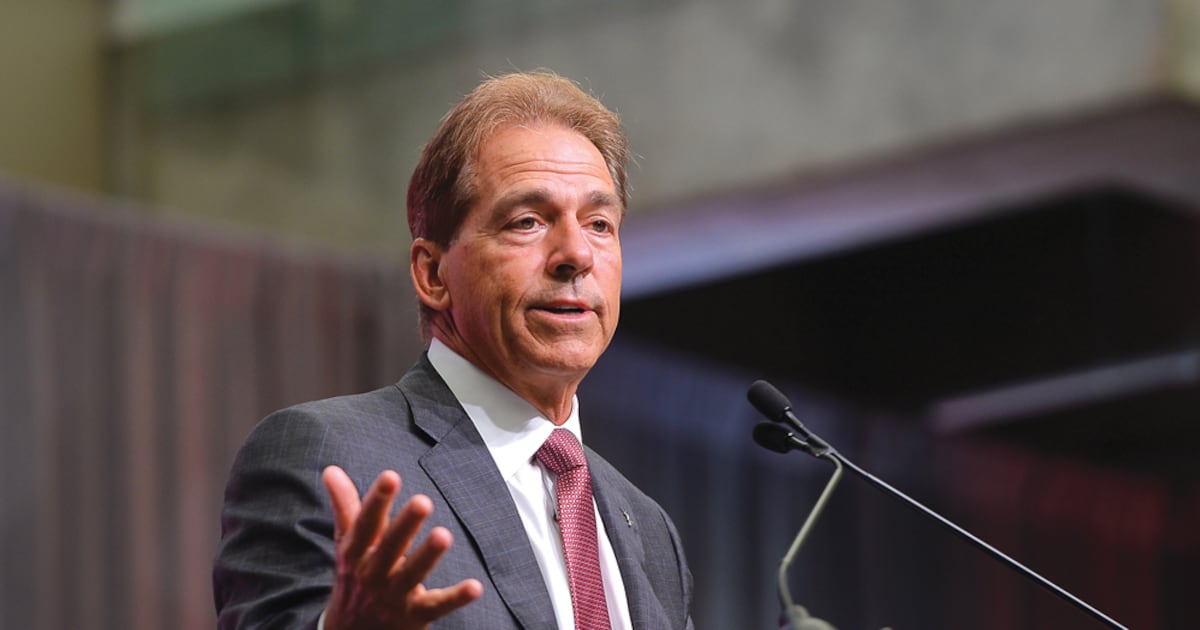
During an appearance on the SEC Network’s “Paul Finebaum Show” yesterday, former college football coach Nick Saban said that he “doesn’t believe there needs to be a commission to resolve the issues of college athletics,” which President Donald Trump reportedly “wants him to co-chair,” according to John Leuzzi of USA TODAY. Saban noted, “I don’t know a lot about the commission. Secondly, I’m not sure we really need a commission … the key to the drill is getting people together so that we can move it forward.” Saban: “I’m not opposed to players making money. I don’t want anybody to think that. I just think the way it’s going right now, it’s not sustainable and probably not in the best interest of the student athletes across the board or the game itself. So I think we need to protect the brand and the competitive advantages and disadvantages that are being created right now. And I think we can fix all that” (USA TODAY, 5/14). THE ATHLETIC’s Khan Jr., Vannini and Williams write while Saban’s comments “raised doubts,” sources said plans for the commission are “still moving forward.” The commission “is not official and still in the preliminary planning stages” (THE ATHLETIC, 5/15).
NIL
The Leading Voice: Mit Winter On Hoops, Life, And The Future
On Jan. 24, 2001, in Williamsburg, Virginia, the Tribe of William & Mary opened up a 32-11 lead at halftime. Although James Madison closed the gap, the Tribe held on for a 71-58 victory. For most in attendance, it was just another win. Yet, for the Tribe’s leading scorer that evening, it was another moment […]
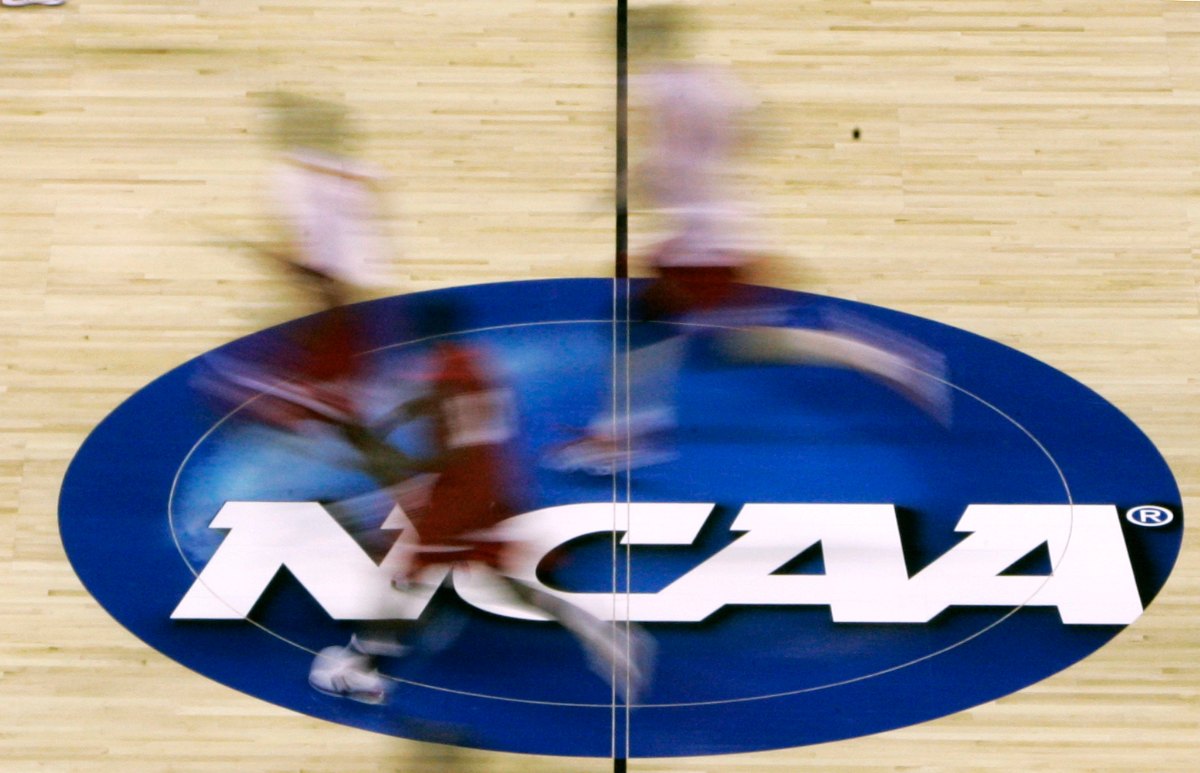
On Jan. 24, 2001, in Williamsburg, Virginia, the Tribe of William & Mary opened up a 32-11 lead at halftime. Although James Madison closed the gap, the Tribe held on for a 71-58 victory. For most in attendance, it was just another win. Yet, for the Tribe’s leading scorer that evening, it was another moment in a basketball journey that would later be mirrored in his legal career—a career that would see him leading another ‘tribe,’ this time in the complex world of college sports law and Name, Image, and Likeness (NIL) rights.
That leader?
Mit Winter.
The 6’7″ forward/wing combo, who finished his career at William & Mary with his name etched in the record books for three-point shooting and free throw percentage. Oh, and that game in 2001? Winter scored a then-school record 36 points and went 17-17 from the charity stripe. He is now one of the nation’s leading voices in NIL, House settlements, and student-athlete advocacy. His smooth jumper and knack for doing the dirty work are now replaced with sharp legal arguments and in-depth analysis of the evolving college sports landscape.
“I loved being a college athlete,” Winter reflects.
Now, as a seasoned lawyer specializing in the collegiate sports landscape, he’s protecting the student-athlete experience and, more importantly, ensuring that the future of college athletics remains a viable path for aspiring athletes.
Winter currently represents universities, collectives, agencies, college athletes, and college sports-related businesses.
If you’ve scrolled through your social media feed lately, chances are you’ve seen Winter breaking down recent court cases, analyzing NIL developments, or commenting on NCAA-related stories. His openness on social media has made him a go-to source for clarity in a field often clouded by legal jargon and shifting policies.
“I like to read and analyze,” Winter says. “That’s probably what led me to law school. Right now, to stay up to date on all of the change in college athletics, it’s constant news reading, gathering, and digesting the day’s information.”
Winter’s journey from college athlete to legal expert began with a simple realization: he wanted to stay connected to sports. “After graduating, I went to law school in San Francisco. In my head, I always knew I wanted to do something in sports,” he explains. “I enjoyed my sports law class and also interned with a sports agent.”
A bit of serendipity played a role as well. The law firm that hired Winter out of college was already working with the NCAA, and Winter found himself involved in a pivotal case.
“The main one was White vs. NCAA,” he recalls. “It was almost a precursor to big-name cases like O’Bannon, House, and Alston. It ended up settling, but it really got the conversation on college athlete compensation started. It sought to allow schools to increase their financial support for athletes through providing cost of attendance stipends.”
While the case did not go to trial, it served as a springboard for Winter’s career and for student-athletes.
That career path continued to evolve as whispers about compensation and student-athletes started to take shape.
“In 2019, you could see NIL conversations were heating up, and you could see that it was coming. States were starting to build their laws, and a lot of people were looking for answers,” Winter says. “With my background as a college athlete and my ongoing legal work with various college sports cases and clients, I really dove into everything that was happening with NIL, paid close attention to the changes happening, and stayed up to date on things as much as possible. So when everything changed in 2021, I was well-positioned to take it on.”
His deep understanding of both the athlete’s perspective and the legal framework has allowed Winter to navigate complex NIL discussions with a unique insight.
“I think it’s helped me a lot,” Winter says of his playing days. “Because it’s one thing to talk about how a law, regulation, or court decision might affect college athletes or college athletics as a whole. But it’s another to have actually been a college athlete and to truly know how something will affect an athlete’s daily life and experience.”
His experience and perspective haven’t just influenced his clients and made him a sought-after voice in discussions on where college athletics is heading.
On if the dust will ever settle and where it all lands:
“The dust will eventually settle,” Winter predicts. “To get there, we will most likely see a model with some form of negotiation or bargaining between athletes in specific sports and some entity representing the teams the athletes are playing on… Athletes on the teams that are part of the league entity will be negotiating the rules on things like player compensation and player movement with this new entity. It would look very similar to the models we see in the NFL, NBA, and other pro leagues, but still contain some elements unique to college athletics. I think a model like that would bring the stability to college athletics that people are looking for. We might need some new federal laws or to amend some to make this model a reality.”
Winter also reflects on some of NCAA history’s “what if” moments.
“I think the biggest misstep was in 2015 when the 9th Circuit affirmed Judge Wilken’s O’Bannon trial court decision that NCAA rules prohibiting NIL compensation violate antitrust law,” Winter explains. “If I were the NCAA then, I would have started to change and adjust. Instead, the NCAA did nothing with respect to NIL, and then a few years later, States just dove in and started making their own rules.”
They also lost a lot of time and public support, and have been trying to play catch-up since,” Winter continues.
He also points to the decision to appeal the Alston case to the Supreme Court as another critical mistake.
“Hindsight is always 20/20, but I think the NCAA was a little overconfident that the Supreme Court would be on their side regarding the antitrust issues. They were completely wrong.”
Despite the intensity and success of his legal career, Winter embraces his role as a parent.
“I’m enjoying this time right now to watch my older children play sports. It’s nice being a parent-spectator rather than planning out practice or figuring out substitution rotations as the coach, which I’ve done for my kids in the past,” he says with a chuckle.
As an attorney and a parent, Winter has a unique perspective on the growing opportunities for student-athletes. He quickly emphasizes the importance of keeping priorities straight amid the allure of big paydays.
“There’s a lot of news and information out there that people read and hear,” he said. “Yes, there is a lot of money to be made, but none of that happens if you don’t get your grades, don’t compete at a high level, and ultimately get better every day. It’s easy to be sidetracked by the money that is being thrown around right now.”
Reflecting on his time as a student-athlete, Winter couldn’t help but laugh at what he might have commanded in today’s NIL landscape.
“Not a lot,” he said with a chuckle. “But then again, there is some crazy money being thrown out right now. I had a really good sophomore and junior year. I bet I could have gotten something if I had tested the waters. But it all worked out.”
His modesty is evident, especially as the market is well into the six-figures for players of his size and ability to shoot from beyond the arc.
“These are college athletes, which makes them unique. They go to class. They have homework. Yet, at the power level, they are essentially professional athletes. It’s a unique dynamic.”
Wherever the next wave of NIL and collegiate sports regulations takes us, Mit Winter will be there—analyzing, advising, and advocating for his new Tribe.
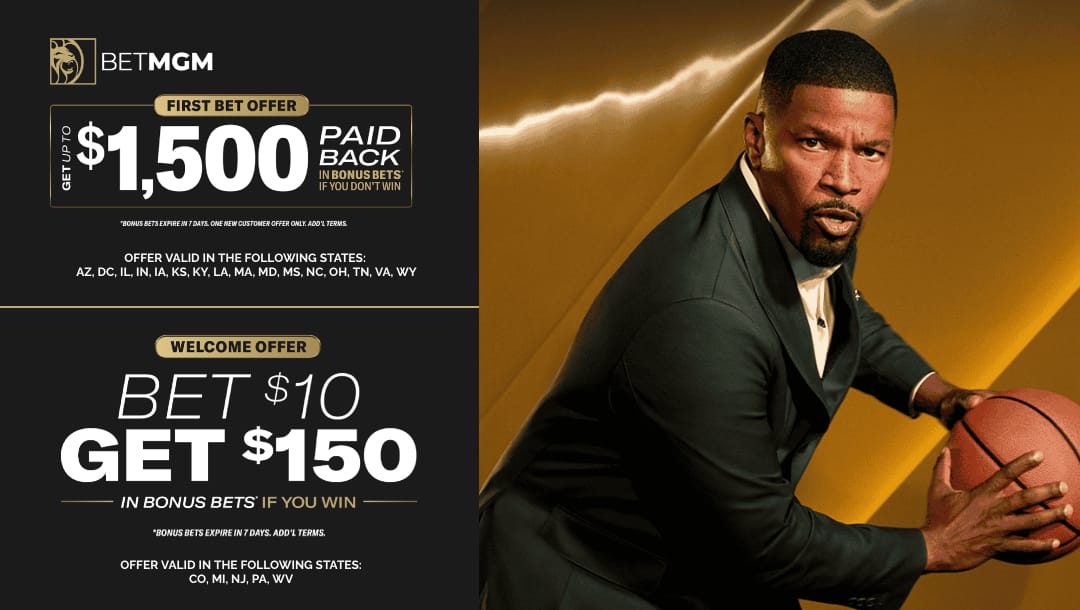

NIL
Russo on the potential of a presidential commission on college sports
With the House v. NCAA settlement still pending approval, The Athletic senior writer Ralph Russo joined us on Thursday’s edition of TexAgs Live to talk NIL and the transfer portal. Russo also delved into the Aggies’ offensive line entering Mike Elko’s second year as head coach. Key notes from Ralph Russo interview The idea of […]
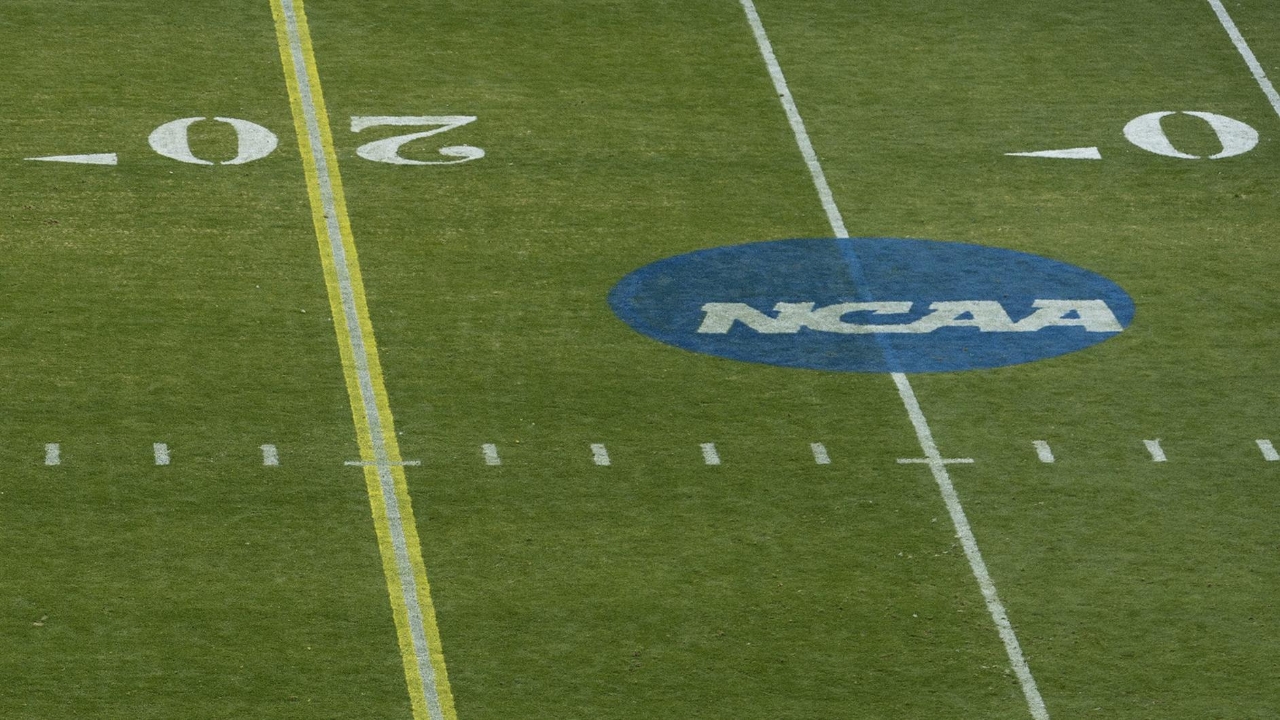
With the House v. NCAA settlement still pending approval, The Athletic senior writer Ralph Russo joined us on Thursday’s edition of TexAgs Live to talk NIL and the transfer portal. Russo also delved into the Aggies’ offensive line entering Mike Elko’s second year as head coach.
Key notes from Ralph Russo interview
- The idea of a presidential commission on college sports seems to have happened after Nick Saban and Donald Trump had a conversation in Tuscaloosa. It’s important to explain what a commission is not. It’s not a law-making body. It’s almost a think tank with the President’s power and approval. Why do we get together and talk about these issues and find solutions? Hopefully, they are actionable, it’s a good idea, and the power of the Presidency can push things along. It’s important enough to have a commission by the president. Maybe it will motivate people to have a solution and give lawmakers in Congress the motivation to cover and talk about this issue.
- Think about this perspective. They need college legislation, whether a settlement passes or not. Still, there is a lot of stuff going on in this country right now. The public loves the idea that we have immigration and tax cuts, but Congress is taking on college sports. Maybe a presidential commission is the President’s signing off on tackling the issue. None of those things can be more symbolic than they are tangible solutions that come out of the commission. They can produce ideas, but not a law.
- It’s not the President’s job to understand what is going on in college sports. If you can understand at a surface level, things are not great here. Even the people who are only dipping into it — not at the level like us, but fans — understand things don’t seem to be working here the best way for fans and athletes in schools. Understanding that, then getting to experts, this is where a commission comes in great. It’s only as good as the people sitting on a commission. Bringing experts together, some diverse thoughts and expertise and different ways of looking at this subject seems to be a good idea. It’s probably an idea that would have been effective seven to eight years ago. We are beyond college sports and the curve. It’s been a trend for two decades.
- We don’t have enough people within the space working in collegiate sports. It’s a byproduct of the way the whole enterprise is set up. Everybody is concerned about their thing. If you work in the SEC, you worry about the SEC. If you work at A&M, you worry about A&M. Everyone is most concerned about their space, hence there’s a blind spot protecting the entity at large in college football.
- With Saban being away from Alabama, it’s good to have him and others who are thinking about the entirety and not prioritizing what’s in their backyard. Is Saban the right guy? He’s outdated. What is progress? We can’t dial back on this stuff, but people need to understand that players are getting paid now. It’s a starting point. It’s figuring out now how to pay them properly in an unfair market and allow movement without infringing their rights. I worry that what Saban envisions is outdated and standing in the way of the progress that’s been made.
- NIL became the de facto salary. That’s what it transitioned into. The idea now is that revenue sharing is the salary. We are going to have a salary structure for players. The question becomes, is there NIL in third parties and collectives that are available to these athletes, can that be regulated and is not, “Here’s $500,000, sign this football.” I don’t know the answer. Can it be regulated? I think the first part is super important.
- I believe it’s not simple to fix, but I think you can rein in the movement, transfer and get it to the players with more freedom. Now they have too much. If we can regulate the transfer movement and get that down to a manageable level, then we bring the free agency market down, and they can’t renegotiate every six months. I wonder if the core of all of this is getting the transfer rules under control, the money flows with it, and it settles and is regulated to a more reasonable system.
- If we keep moving on a linear path from where we came when A&M joined the SEC, we have moved in the direction you mentioned. Whether it’s a few conferences or a super league of 60 teams, maybe the Big Ten and SEC are the paths we are moving along. Talking about someone in the industry, about the idea, the reason I’m so sure we are going that direction is that there are so many factors outside that may change the trajectory. Maybe it’s federal legislation. They say we can keep doing this with the conferences, maybe the government steps in and says it’s ridiculous. You’re hurting other schools. Maybe it’s wherever the media industry goes into a degree and bursts or plateaus.
- Higher education is in a weird spot, and many factors that affect the future of college sports are and aren’t directly tied to the future.
- I do think Mike Elko seems like his career is short enough that No. 1: Yes, the jury is still out as to what he will do at A&M. You’re more than welcome to still be cautious and optimistic. In the short term, you nailed it. They overachieved last year, and then the record became familiar. But it felt a little better from others. It felt like a good beginning.
- The O-line is huge. They didn’t go portal shopping, and Marcel Reed is the guy. It’s an interesting statement about who he is and his talent. You bring in portal receivers, who hopefully create explosive plays that were lacking last year. The running back is healthy. The defensive front is not as good, but A&M is better in the back end. I think it adds up with what you said, it’s progress, and the roster is great. But compared to the top of the SEC, you need one more full recruiting class and a freshman class to develop. They’re still a year a from banging heads with the top of the SEC.
- Texas is at the top of the SEC, and that creates an angst for the Aggies to hit a fast-forward button. We can’t be 9-3 and satisfied when Texas is competing for a national championship. I think the dynamic of what happened in Austin and College Station is interesting and accelerates the angst in College Station.
NIL
College Baseball Coach Takes Shot at Tennessee’s Transfer Portal Acquisitions
College baseball coach Paul Mainieri took a shot at some of Tennessee’s recent transfer portal acquisitions. It’s no secret that college sports have changed a lot of the years and perhaps the two biggest reasons for it are the transfer portal and NIL. In a recent interview, South Carolina baseball head coach Paul Mainieri was […]

College baseball coach Paul Mainieri took a shot at some of Tennessee’s recent transfer portal acquisitions.
It’s no secret that college sports have changed a lot of the years and perhaps the two biggest reasons for it are the transfer portal and NIL. In a recent interview, South Carolina baseball head coach Paul Mainieri was discussing some things that have changed since he left baseball, and the NIL was something he hit on.
“When I first got here last summer, we lost a lot of recruiting battles because other schools were giving a more, shall I say, appealing package to kids,” Mainieri said. “That’s the reality of the world we live in now. The schools that have a lot of money and are willing to give it to the players are getting the best players.”
Mainieri took it a step further though and specifically singled out two players that Tennessee acquired from the transfer portal last offseason and how they ended up in Knoxville.
“We were playing Tennessee, for example, and the first baseman (Andrew Fischer) and the No. 1 starting pitcher (Liam Doyle) both played for Ole Miss last year, and both had a lot of success for Ole Miss last year. Why would they change schools from Ole Miss to Tennessee? Because they like the color orange? I mean, let’s be honest.”
Fischer and Doyle have been crucial additions for Tennessee this season and regardless of how they got here, it’s become part of the game in college sports.
Follow Our Social Media Pages:
• Follow Tennessee on SI on Twitter: @VolsOnSI
• Follow Tennessee on SI on Facebook: @VOLS on SI
Follow Our Staff:
Follow Our Website
Make sure to follow our website Tennessee on SI.
OTHER TENNESSEE NEWS
NIL
Where the top 10 small forwards are committed for 2025-26 season
The college basketball transfer portal is closed following a record-setting 2025 cycle that saw more than 2,500 players enter during the 30-day window this spring. Most of the top prospects already committed elsewhere as rosters continue to take shape with programs finalizing key additions for the 2025-26 season. The 247Sports scouting team unveiled its final top 150 […]

The college basketball transfer portal is closed following a record-setting 2025 cycle that saw more than 2,500 players enter during the 30-day window this spring. Most of the top prospects already committed elsewhere as rosters continue to take shape with programs finalizing key additions for the 2025-26 season. The 247Sports scouting team unveiled its final top 150 transfer portal prospects in April, with a number of talented small forwards featured.
Of the 31 small forwards listed in the top 150, only three remain available in mid-May with the NBA Combine likely affecting those decisions. While the deadline has passed for undergraduates to enter the portal, there is no set timeline for when transfers must make their final decisions.
So, who are the top-rated college basketball transfer small forwards and where are they committed for the 2025-26 season?
RELATED (VIP): Auburn, Kentucky, Michigan headline winners of 2025 college basketball transfer portal cycle
Below is a look at the 10 highest-rated small forwards from the current college basketball transfer portal cycle and where they committed.
NIL
Possible Trump Executive Order on NIL Reform Would Face Legal Challenges
After meeting with former University of Alabama football coach and seven-time national champion Nick Saban, President Trump is considering forming a college sports commission and issuing an executive order to establish national standards for name, image, and likeness (NIL)—an umbrella term that includes how college athletes can earn compensation based on their personal brand and […]

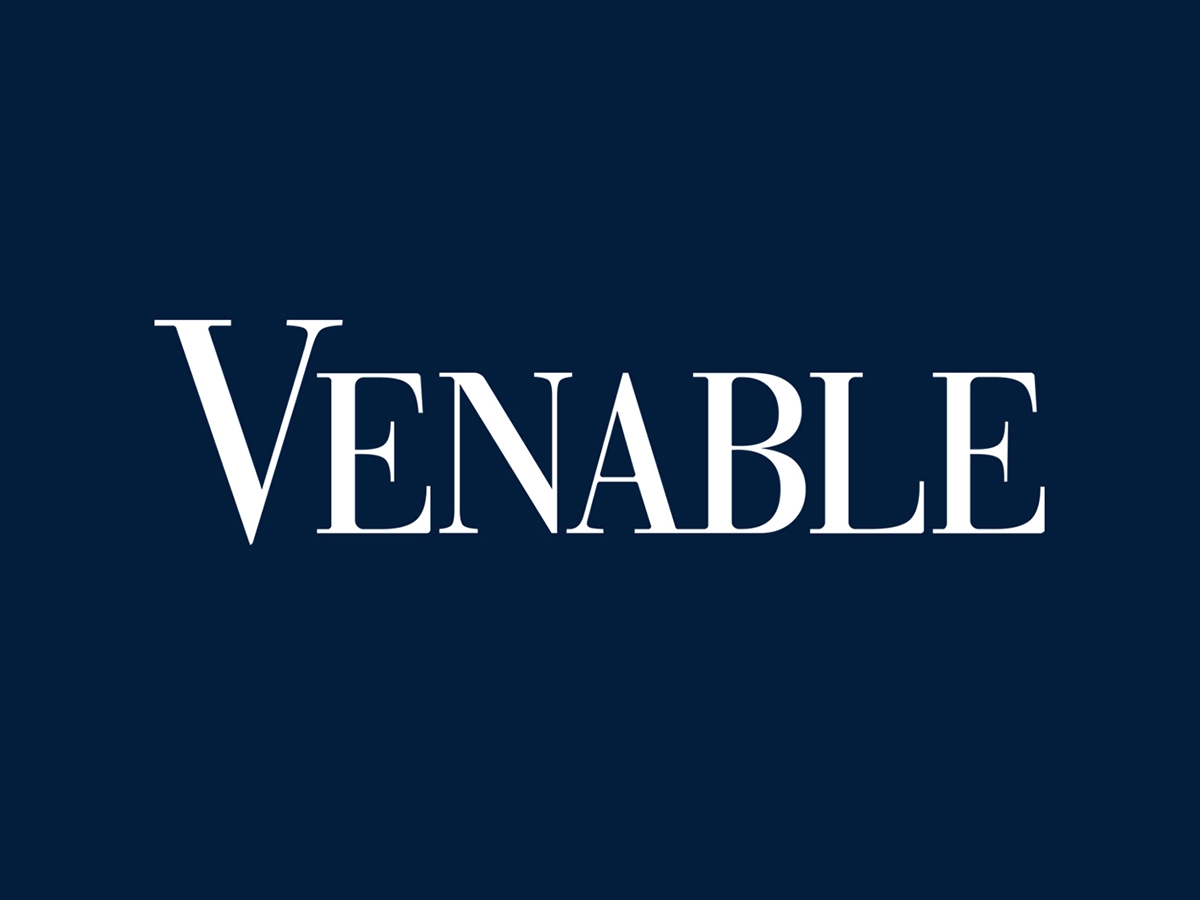
After meeting with former University of Alabama football coach and seven-time national champion Nick Saban, President Trump is considering forming a college sports commission and issuing an executive order to establish national standards for name, image, and likeness (NIL)—an umbrella term that includes how college athletes can earn compensation based on their personal brand and public recognition.
Saban expressed concerns about the current NIL landscape creating an uneven playing field among schools due to disparities in financial resources, especially among powerhouse programs, as well as inconsistencies in NIL laws across different states. Trump was receptive to Saban’s concerns. However, an executive order seeking NIL regulations faces challenges.
For example, many states have enacted their own NIL laws, which are rooted in state right-of-publicity laws. So far, state NIL laws have been very generous toward athletes and have generally removed restrictions on the amount an athlete may earn from NIL. There are currently no federal right-of-publicity laws, and there is no sign that Congress will pass legislation that will explicitly preempt state NIL laws. Thus, an executive order from the Trump administration would at most help set national guidelines for NIL—it would not have the power to override state laws that conflict with those guidelines.
Similarly, an executive order limiting NIL might conflict with state labor and employment laws. For example, in the closely watched Johnson v. NCAA case pending in the U.S. District Court for the Eastern District of Pennsylvania, athletes are pursuing employee status not only under the federal Fair Labor Standards Act (FLSA), but also under various state wage laws in Connecticut, Pennsylvania, and New York. An executive order limiting NIL compensation would have no authority to preempt or alter these state-specific laws, which are governed by each state’s legal framework.
Additionally, Title IX might be implicated by an executive order regulating NIL. Title IX mandates that male and female athletes at federally funded educational institutions receive equitable treatment in benefits and opportunities. While NIL compensation is typically provided through private deals, this will change under the proposed House v. NCAA settlement if approved, which will allow schools to make payments directly to athletes. If an executive order is perceived to result in any sex-based disparities in school-facilitated NIL or revenue-sharing opportunities, it could trigger legal challenges under Title IX.
A Trump Executive Order Goes Only So Far
NCAA president Charlie Baker has publicly expressed openness to executive action. However, an executive order from the Trump administration will not provide the NCAA with what it truly desires—an antitrust exemption from Congress. The NCAA has long sought an antitrust exemption from Congress that would have the potential to shield it from antitrust litigation, a necessary step to preserve the NCAA’s notion of “amateurism.” Courts have grown increasingly skeptical of the NCAA’s efforts to preserve amateurism, as seen with the outcomes of landmark cases such as O’Bannon v. NCAA and NCAA v. Alston. These cases reflect a broader judicial trend toward scrutinizing NCAA policies under traditional antitrust principles. By obtaining an antitrust exemption, the NCAA could effectively remove these questions from judicial review, placing the authority to define and validate its amateurism framework in the hands of Congress.
An executive order from the Trump administration is better than nothing, but it still leaves the NCAA exposed. An executive order can direct federal agencies, shape enforcement priorities, and clarify regulatory interpretations, but it cannot override existing laws, such as the Sherman Antitrust Act. In other words, even if an executive order expressed support for the NCAA’s amateurism model and restricted NIL compensation, it would have no binding effect on the judiciary. Courts will still be obligated to apply the Sherman Act as written.
In short, while there may be compelling reasons to attempt to bring order to the complex world of college athlete compensation, addressing NIL through an executive order is likely to face significant challenges, particularly if it fails to account for the intricate legal and regulatory issues underlying the current system. And it likely will not bring an end to the NCAA’s legal challenges.
-
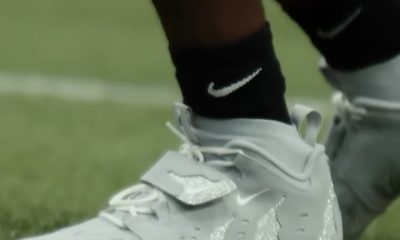
 Fashion3 weeks ago
Fashion3 weeks agoThis is poetry in motion.
-
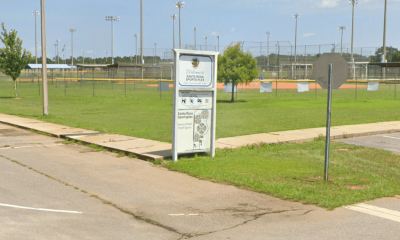
 Rec Sports3 weeks ago
Rec Sports3 weeks agoDeputies investigating incident that caused panic at Pace youth sports complex
-
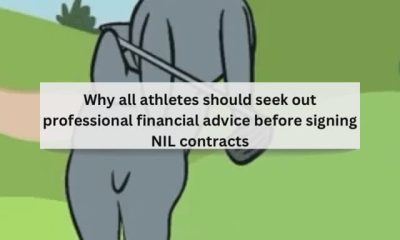
 NIL3 weeks ago
NIL3 weeks agoSave Like a Pro: NIL money isn’t free cash—taxes take a bite! Set aside part of …
-
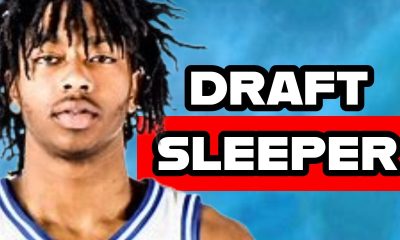
 College Sports2 weeks ago
College Sports2 weeks agoDuke basketball's Isaiah Evans on 2025 NBA Draft early entry list
-
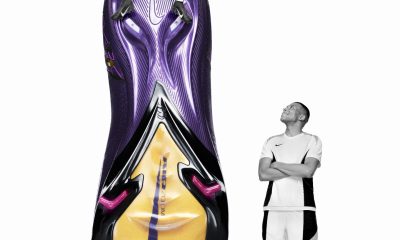
 Fashion3 weeks ago
Fashion3 weeks agohas always dreamed in Mercurial. Now his initials are on the boots. The new Kyl…
-

 Fashion2 weeks ago
Fashion2 weeks agoHow to watch Avalanche vs. Stars Game 7 FREE stream today
-

 High School Sports6 days ago
High School Sports6 days agoWeb exclusive
-

 Sports6 days ago
Sports6 days agoPrinceton University
-

 Sports6 days ago
Sports6 days ago2025 NCAA softball bracket: Women’s College World Series scores, schedule
-

 Motorsports1 week ago
Motorsports1 week agoBowman Gray is the site of NASCAR’S “Advance Auto Parts Night at the Races” this Saturday






 Ryan Clark GOES OFF on his potential Fit | NFL Live
Ryan Clark GOES OFF on his potential Fit | NFL Live











